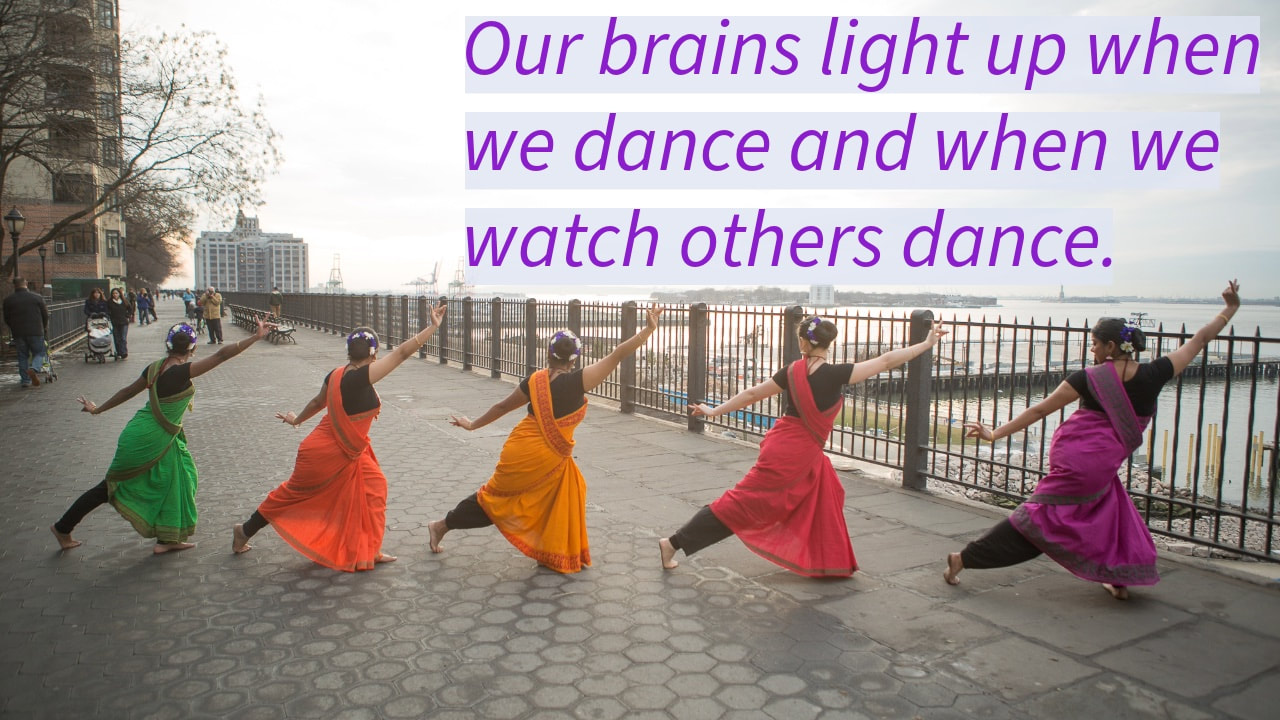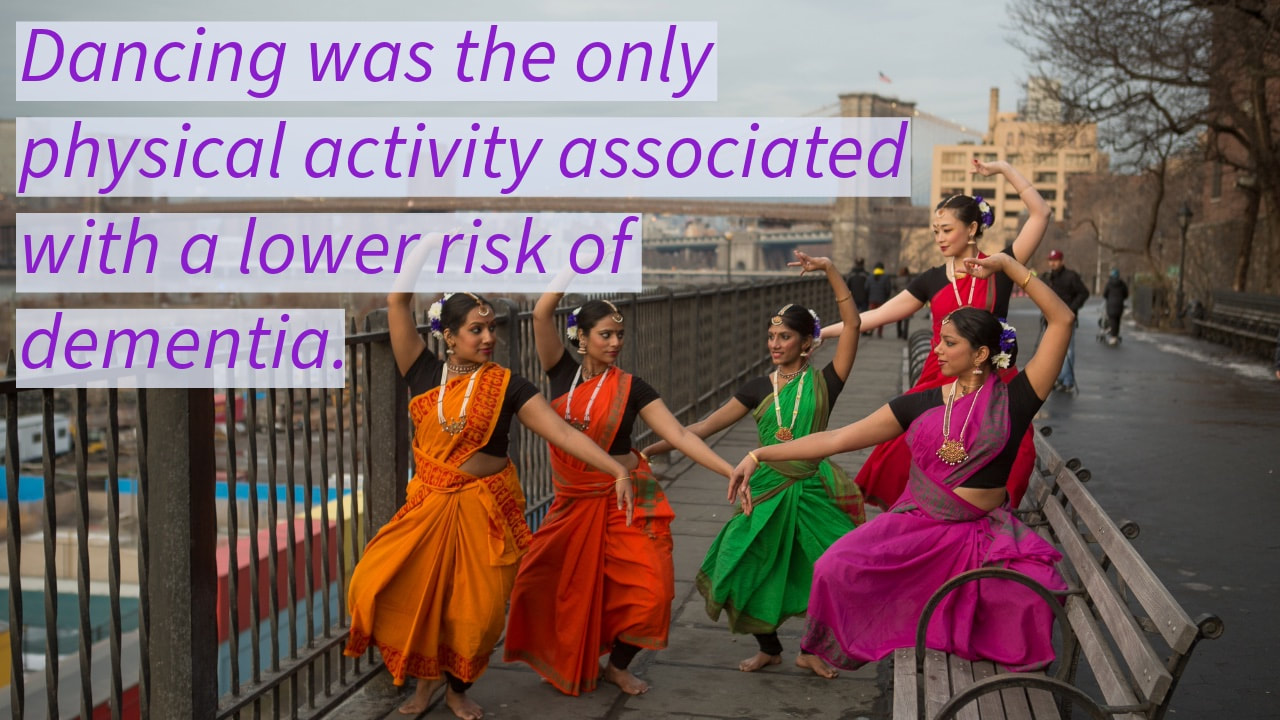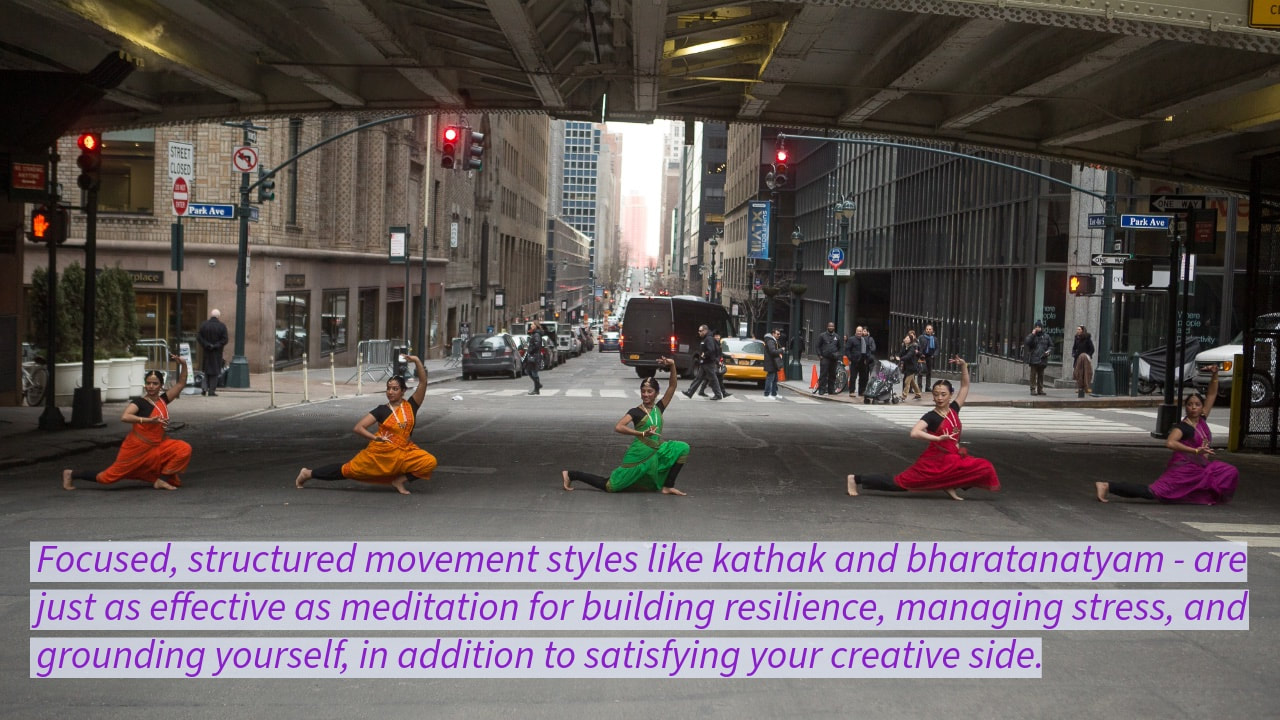|
Dancing is incredible for our body, mind, and spirit - especially in our twilight years. There is growing evidence to support the therapeutic effect of dance as we age. From muscle function and cognitive control to overall mood and quality of life, dancing elevates our wellbeing in many ways even compared to other forms of physical activities. If you're reading this, you already know it's fun! But did you know it can also battle neurodegenerative conditions, create new neural connections, keep cognitive mobility and function operating at a high level, manage muscular degeneration, help with posture, and more? On top of this, mix pleasure and benefit and you have a recipe to joyfully keep your quality of life high without the intense pressure of other, less exciting activities. According to these articles from Harvard Medical School [1] and Scientific American [2]: Music stimulates our brains’ reward centers. Coordinated movements do too. So dancing - combining music and movement - constitutes a “pleasure double play” for our brains. The second article explores in depth why... So it is no surprise that dance and music are being increasingly studied as tools to prevent, manage, or improve neurodegenerative conditions in aging populations. How it works: Neurodegenerative disorders are associated with the damage and death of nerve cells in the brain - Parkinson’s and Alzheimer’s being the most commonly known ones. Parkinson’s disease (PD) primarily causes shaking, stiffness, issues with posture and balance, and difficulty walking and talking over time - manifesting from regions of the brain associated with movement. Alzheimer’s disease (AD) is a type of dementia that affects memory, thinking, language, and behavior; eventually impacting the ability to tackle simple tasks. It starts from regions of the brain associated with memory, then spreads to other areas. So how can we challenge these areas of the brain and promote healthy neural connections? By dancing, of course! This systematic review from the National Institutes of Health [3] database concluded that dancing “substantially improved the global cognitive function, memory and executive function” for those having mild cognitive impairment, and “remarkably improved general disease condition, balance, and gait” for those having Parkinson’s. Watch PD patients find joy through dance in India in this BBC clip [4]. Or check out the sheer number of “Dance for PD”, “Choir for AD” type classes inspiring hope everywhere, even on zoom. This study published in the New England Journal of Medicine [5] found that while leisure activities reduced the risk of dementia... Our bias might show a little when we proudly state that Indian dance is the icing on this awesomeness cake. The inherent structure and philosophy of these art forms - and how we approach learning them at Navatman - afford plentiful benefits. Cognitive gains from the way we learn our basic bants/adavus and progress into complex choreography with lots of rhythmic variation. Muscular gains from how we initiate proper posture/conditioning into muscle memory and incorporate our hastas/bhedas/charis with varieties of cross-training into repetitive practice. Cardiovascular gains from maintaining technique in third/fourth speeds and working up to lengthy repertoires. Psychological gains from abhinaya meditations and practice discipline. Social gains from group classes and performance camaraderie. Don’t take our word for it, read unique perspectives here [6] and here [7] about Bharatanatyam on the brain. So what are you waiting for? Take advice from the CDC [8] and get moving:
Jump right in! Join the 30 day kathak challege: https://navatmanvideobroadcasting.uscreen.io/pages/kathak30daychallenge Join the 30 day Bharatanatyam challege: https://navatmanvideobroadcasting.uscreen.io/pages/bharatanatyam30daychallenge Explore the full catalog: https://navatmanvideobroadcasting.uscreen.io/catalog References: [1] Scott Edwards. “Dancing and the brain”. Harvard Medical School, 2015. https://hms.harvard.edu/news-events/publications-archive/brain/dancing-brain [2] John Krakauer. “Why do we like to dance—And move to the beat?”. Scientific American, 2008. https://www.scientificamerican.com/article/experts-dance/ [3] Cheng-Cheng Wu, et al. “Dance movement therapy for neurodegenerative diseases: A systematic review”. NIH, 2022. https://www.ncbi.nlm.nih.gov/pmc/articles/PMC9394857/ [4] Omkar Karambelkar and Nitin Nagarkar. “Parkinson’s disease: The patients finding joy through dance in India”. BBC India, 2023. https://www.bbc.com/news/av/world-asia-india-65421777 [5] Joe Verghese et al. “Leisure activities and the risk of dementia in the elderly”. New England Journal of Medicine, 2003. https://www.nejm.org/doi/full/10.1056/NEJMoa022252 [6] Samiksha Sivan. “Neurobiology of Bharatanatyam: Dancing with your brain”. 2020. https://medium.com/@sammy.rafa/neurobiology-of-bharatanatyam-dancing-with-your-brain-b0c67580e009 [7] “How does dance, specifically Bharathanatyam affect brain development”. Business Bliss Consultants FZE, 2018. https://ukdiss.com/examples/dance-affect-brain-development.php [8] “Dance your way to better brain health”. Centers for Disease Control and Prevention, 2018. https://www.cdc.gov/aging/publications/features/alzheimers-and-exercise.html Written by Lavanya Jagirdhar
0 Comments
Leave a Reply. |
AuthorsPriya Narayan Archives
October 2023
Categories |
© Navatman. All rights reserved.
Email: [email protected]
38 W 32nd st, 3rd floor
We do not have a phone :) please email us
Email: [email protected]
38 W 32nd st, 3rd floor
We do not have a phone :) please email us




 RSS Feed
RSS Feed